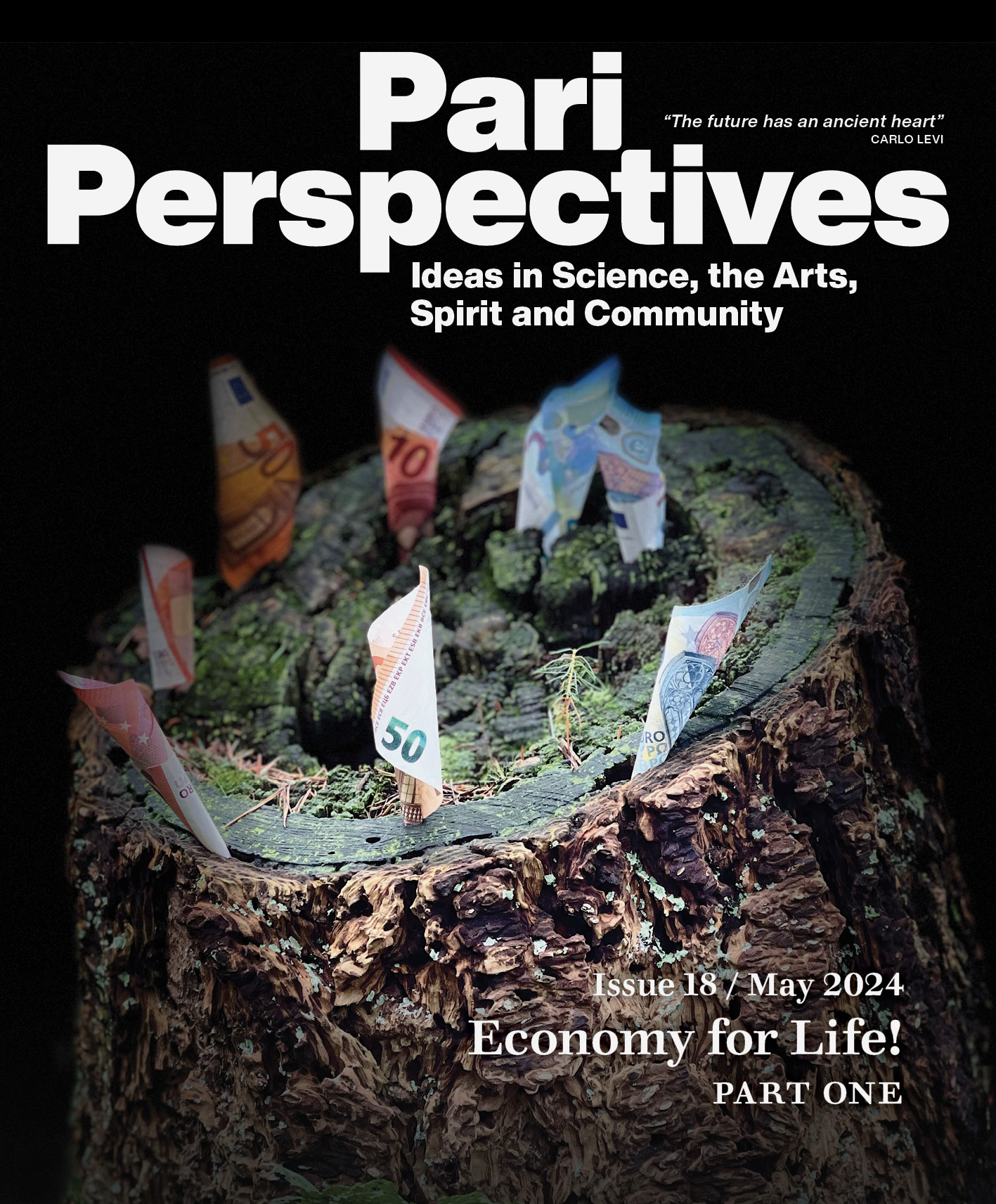Your cart is currently empty!
Pari Perspectives 18
May 2024
Economy for Life! Part One
Welcome to issue 18 of Pari Perspectives: Part One of a two-issue series called Economy for Life!
In Volume One of this special issue (Volume Two will be released in September 2024) we open with an article by David Bollier about the commons. He describes the economy of the commons, but also how the economy itself is a commons, challenging us to reclaim our agency in it. And that encapsulates the core aim of these two issues of Pari Perspectives: furnishing us with ideologies, narratives, ideas, and examples to foster economic fairness and to assist us in recognizing where things go wrong and how to address them
Elena Lomeli Aguirre describes how our democracy has become an econocracy, an institution that serves the economy rather than life itself. She also shines a light on how to escape from this imprisonment. Reon Brand also sheds light on the shortcomings of the current economy. He advocates for infusing poetry into the way we organize our households. Elise Talgorn demonstrates how films and film heroes can aid us in reevaluating our economic narrative. Marieke van Mieghem and Ellen Rooijakkers illustrate a practical example of local flax cultivation as a catalyst for solidarity, empowerment, and inspiration. Sam de Muijnck and Maarten Nijman argue that economic transformation begins with a shift in economic education. The artist collective ruangrupa, which curated documenta 15 in Kassel, Germany in 2022, share their journey to establish a lumbung economy, emphasizing principles of local anchoring, regeneration, independence, and generosity, as well as humour and lightheartedness even amidst great injustice and stress. Ruangrupa’s perspective on decolonizing the economy also resonates in the article about Vertical Thinking as an alternative to the horizontal thinking entrenched in colonization. Finally, Marga Rotteveel takes us to Gamvik, a remote fishing village on the Norwegian coast of the Barents Sea. She shows us how Gamvik serves as a microcosm of resilience, community, and sustainability. Moreover, it inspires us all to nurture curiosity about the abundance of wisdom present in small yet influential communities like Gamvik, as well as others around the world.
Godelieve Spaas, May 2024
The journal is available to everyone who has become a Friend of the Pari Center: www.paricenter.com/membership

